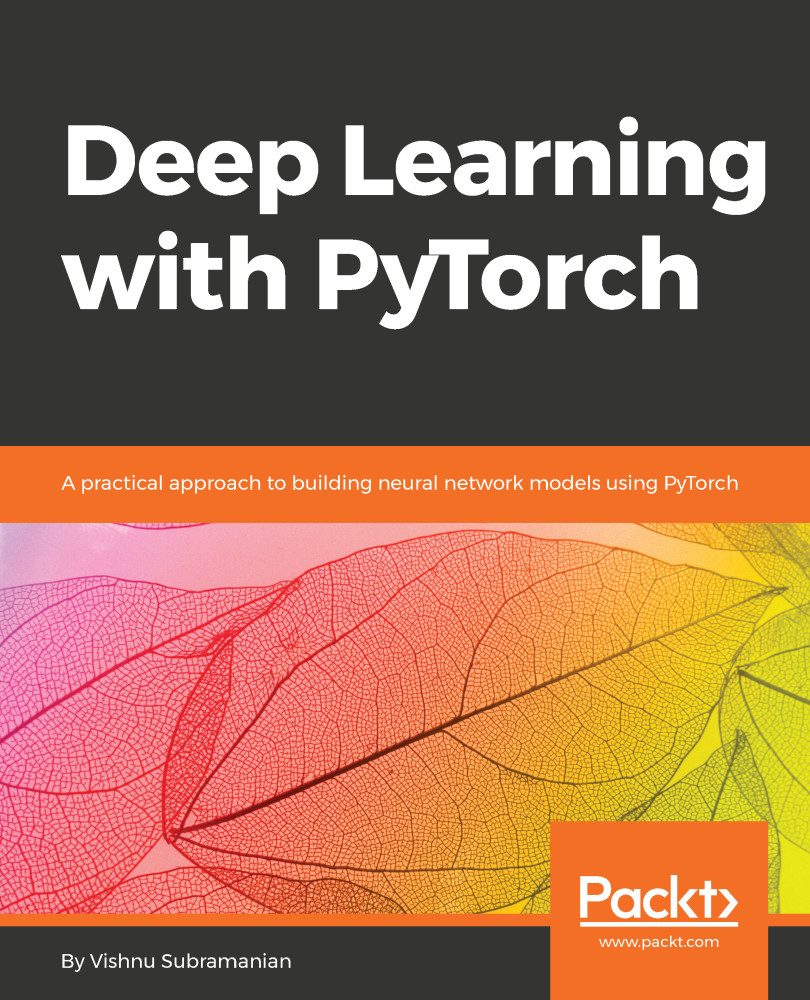In the last chapter, we covered how to handle spatial data using Convolution Neural Networks (CNNs) and also built image classifiers. In this chapter, we will cover the following topics:
- Different representations of text data that are useful for building deep learning models
- Understanding recurrent neural networks (RNNs) and different implementations of RNNs, such as Long Short-Term Memory (LSTM) and Gated Recurrent Unit (GRU), which power most of the deep learning models for text and sequential data
- Using one-dimensional convolutions for sequential data
Some of the applications that can be built using RNNs are:
- Document classifiers: Identifying the sentiment of a tweet or review, classifying news articles
- Sequence-to-sequence learning: For tasks such as language translations, converting English to French
- Time-series forecasting: Predicting...


